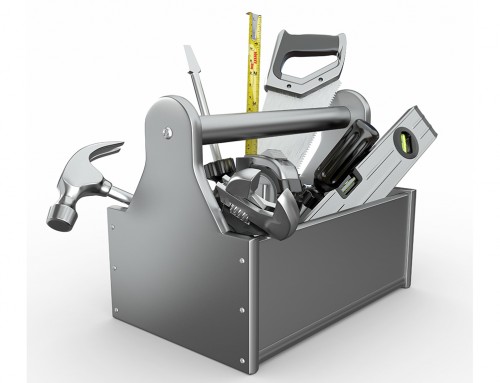What is public relations?
Most people know that PR stands for Public Relations, but when asked to define what this means, many will stumble and offer an explanation which conjures up images of AbFab, long lunches and cocktail parties.
Whilst this image may be true for some sectors of the economy, as a PR agency working almost exclusively in the construction industry, we can tell you that this perception is diametrically opposed to the public relations activity that is undertaken for building materials manufacturers, engineering companies and other B2B markets.
Public Relations is the professional management of a positive public image for an organisation or individual. It involves establishing and maintaining a reputation to engender goodwill.
In its broadest sense, the organisation’s ‘public’ includes any person or body that interacts with the organisation, including customers, potential customers, personnel, suppliers, local authorities, legislative bodies and so on.
Public relations activity is anything that an organisation does to maintain and enhance a good reputation with its public. It can include a wide range of activities and policies, from the manner in which telephones are answered through to events, roadshows and exhibitions. As a discipline, it should inform virtually everything that an organisation does, including all types of promotional undertakings
Media relations for construction
Whilst every organisation values a positive image, few business to business companies use the term PR in this broad sense. To most, especially in the construction industry, PR is about media relations; researching and writing ‘newsworthy’ stories and disseminating them to relevant media, generally print or online. Nowadays, this PR activity will not only involve the more ‘traditional’ aspects of PR and media relations, but also the maintenance of a company’s blog, or the news pages of their website, as well as social media activity.
It is from this standpoint that we shall be considering PR in the construction industry, looking at the subject from a business to business perspective, rather than considering the approach that might be taken for consumer markets.
So, if your organisation supplies products and/or services that are specified, used or stocked by architects, interior designers, developers, contractors, distributors (including builders’ merchants), engineers, specialist trades and the like, this article is for you!
Targeting PR activity
Even with such a tight remit, PR services and activity for the construction industry is as varied, challenging and interesting as the industry itself. It can cover anything from the appointment of a new sales person to placing a project story with an architectural publication. Success requires knowledge and understanding of a number of areas, including:
- The way in which products and services are selected, specified and used.
- Which professionals influence these processes, and how.
- What motivates the professionals and drives their decision-making.
- How professionals work together.
- The language and terminology relevant to these professions.
- How to translate technical features of products into benefits that are relevant to the various professions.
- The effects of performance standards.
- The media available – who reads what, what they accept and what they reject.
Properly directed and resourced, PR can provide a building materials manufacturer or service provider with a cost-effective, influential and powerful weapon in its promotional armoury.
Where to start
As with any undertaking, it is useful to establish a set of objectives for your PR activity. These will vary from company to company, but might include precise, measurable targets, such as sales enquiries or number of hits on a website page, as well as those which are less easy to quantify, such as improved company awareness or image. Naturally, these objectives should be realistic. Having some sort of benchmark against which future assessments can be compared is useful, although this may not always be practicable, or affordable.
Typical objectives might include:-
- Increase company awareness to existing and potential customers.
- Increase and maintain awareness of range of products and services offered.
- Increase enquiries for products and services.
- Persuade target audiences to source and specify products.
- Promote intangible benefits of using, such as service, technical expertise, product/industry knowledge, product availability, etc.
- Promote quality of products.
- Increase website hits by 20%.
- Increase engagement across social media platforms.
- Enhanced company image.
- Issue two stories per month.
Having set objectives, agreed on how success will be judged and established the methods and systems to measurethis, you can start to consider your PR activity.
What to say
With the exception of a one-off product launch or special event, most PR activity will be expected to maintain a positive market presence over a period of time. As such, it relies on a regular supply of material to keep the machine running.
This does not necessarily mean that you need to have a continuous stream of new products, staff appointments and interesting projects to promote, but it does mean that you need to be generating interesting, newsworthy stories that are relevant to your target audiences, or presenting information which engages them.
Ideally, PR activity will be a combination of many different types of messages aimed at achieving your objectives. These might include product developments, contract stories, appointments, company viewpoints, technical articles, informed comment, advice and the like.
A common mistake is for an organisation to believe that the market is interested in what they have to say. Whilst there are journals out there that will publish just about anything provided some sort of editorial administration (colour separations in old money) fee is paid, the aim is to get readers (your target audience) to read your message. Therefore, the information you prepare and disseminate needs to be of interest to them.
Generally, the assessment of what makes a topic worthy of consideration for PR should be undertaken from the target audience’s perspective. This is the way that editorial departments think, and assessing your own material in this way will enhance your chances of acceptance and ultimate success.
When assessing this material, you should also be considering how it can be presented to the media. Is it a simple product or contract story, prepared by you, or does the story have sufficient value to be offered to a selected publication as an exclusive? Can it be presented more interestingly as a video on your website?
In addition to generating your own material, you should also be monitoring the requirements of the media; is there an editorial feature planned that is directly relevant to your organisation and can you provide an objective viewpoint as a lead article? Can you offer specification advice, cover technical issues or provide guidance on good practice which will be useful to the readers in their jobs?
Whilst such media exposure may not directly promote your organisation’s products, it will contribute towards a positive image and help to establish the organisation, and perhaps key individuals, as experts in their field, thereby enhancing credibility in the market.
Generating material
We have already touched on the reactive side of PR, where editorial features may bring opportunities for exposure, but most material will need to be generated by the organisation itself.
In our experience, many companies embark on their PR campaigns with the very best of intentions; the first few months sees a flurry of activity and enthusiasm with material being generated from a number of sources, much of it being past stories that have been held in a log-jam created by PR inactivity.
The challenge is to ensure that this material continues to flow.
Who is responsible for PR?
All too often, we see the burden of PR placed solely on the shoulders of the marketing department. Whilst it is natural for marketing to direct, implement and control PR activity, a successful PR strategy needs virtually everyone in the organisation to be thinking about PR whilst they are performing their day-to-day roles. This includes sales, production, technical, customer service and other key departments.
Imbuing a PR culture throughout every department is not easy, but it will provide a constant flow of ideas and material that can be used to create interesting and varied media communications:-
- External sales staff will generally be the first to hear about new contracts, but they will also be able to give insights into market developments and issues which can provide material for articles and viewpoints.
- Technical and design departments will be involved in creating unusual or innovative solutions. They can be your eyes and ears when it comes to new performance standards and regulations, all of which offer excellent opportunities for comments and objective technical articles.
- Production staff will be able to provide information on new methods and technologies which increase product performance, improve quality or enhance environmental credentials.
- Internal sales staff may pick up on large or interesting contracts.
Gathering the information can be challenging, but it is not impossible; issue standard forms to sales staff to allow them to submit project information with the minimum of fuss, network with as many departments as possible to seek new opportunities, make PR an item for discussion at every departmental meeting, advise departments of forthcoming editorial features and ask if they have anything to contribute.
There can never be too much material from which to select suitable PR stories. Getting the entire company involved lightens the workload, assures a regular supply of information and provides a varied approach to your PR activity.
Illustrating the point
It’s an old adage, but it’s true; a picture (and video nowadays) paints a thousand words!
Investing in good quality still images (either photographic or illustrative) and video will pay dividends not only for PR, but also for many other areas of marketing communications. Advertising, websites, literature and sales presentations all need high quality visual content to add interest and illustrate the points being made.
Unless you have particularly skilled photographers on your staff, with the right equipment, we would always recommend securing the services of a professional photographer who has experience in the construction industry. They will know what shots to take and how to compose them to achieve the best results for your company.
For project photography, where possible, collate a number of projects in one geographic area that can be photographed on the same day. This will get the most from your photographer.
Certainly, manage your photography budget wisely, but bear in mind that you could need images and footage at any time. If you don’t think about it until the moment you need it, the opportunity could have passed, either through project progress, weather conditions or quality of light.
The same principles apply to video; the better, more professionally a video is shot and edited, the greater impact it will have and the better impression it will portray of your company.
If photographic or video shoots are not possible, consider using other imagery techniques, such as CGI, which can be used to create high quality photo-realistic images of products and installations. CGI techniques can also be used to produce animated footage showing a fly-round of a product or actually making the product work. See this article for what is possible – CGI offers alternative to studio & location photography.
Delivering the message
Once you have your story researched written or recorded what do you do with it?
The simple answer is to seek out the media (online and printed) that reaches your target audience in the most effective manner and then submit your article or idea to the editorial department.
For feature articles, it is always worth talking to the editor to ascertain what is required before you write anything; the editor may have a particular angle that they want to cover or may be willing to listen to suggestions. Some publications do not accept ghost-written articles and prefer to research and write the story themselves, so all you need do is ensure that yours is appropriate and sell the key features to the magazine.
For more general pieces, such as product news and small contract stories, a ready-prepared article is fine. Submit it to the editorial department and follow up with a courteous enquiry to make sure it has been received and assess the editor’s reaction to it. Always accept the editor’s decision and never insist that it should be used. If the decision is ‘no’ find out why (respectfully) and modify future attempts accordingly.
Nowadays, many publications ask for some sort of financial contribution to guarantee that your information will appear. It is your decision as to whether to accept such charges. Whilst such charges may be seen as devaluing the editorial worth of a publication, they have now become a fixture and we recommend that companies do set aside some of their promotional budgets to cover them.
If you publish your own news blog, we normally advise that you allow the article to run its course in the media before uploading it to your site.
Getting it done
In principle, undertaking PR activity is a straightforward enough process. There are some key skills required, such as good copywriting and a nose for a story, but if you have these you should be fine.
If you do not have these skills, or cannot find the time to dedicate to the activity, it pays to secure the services of an external PR consultant who will take care of all aspects for you and ensure that your PR does not founder.
Choosing a PR agency for construction industry activity can be tricky. Many purport to know all of the editors and have the necessary skills, knowledge and expertise to satisfy your requirements, but when you look a little deeper, you might be disappointed.
Certainly, knowledge of the way in which the building industry works is useful, if not essential. If you are creating PR messages for architects, they will have to be written and prepared in a different way than they would for, say, an installer. Each target audience will benefit from your product in different ways to another, so this has to be taken into account and your PR agency should know this.
Equally, a PR agency which specialises in promoting building materials to the construction industry should be able to identify how your products relate to each target audience and how best to promulgate your message to each professional, tradesman or stockist.
As a PR agency which has been providing services to the construction industry for more than 30 years, we would also suggest that you give serious consideration to how committed the agency is. Will they get their hands dirty when needed to? Will they think for you? In short, will they act in your best interests at all times, providing a service as if they were you and delivering results that you would be happy with.
Talk to us to find out how we can transform your PR activity in the construction industry and enhance awareness of your company, products and services to specifiers, architects, contractors, designers, installers and stockists.





